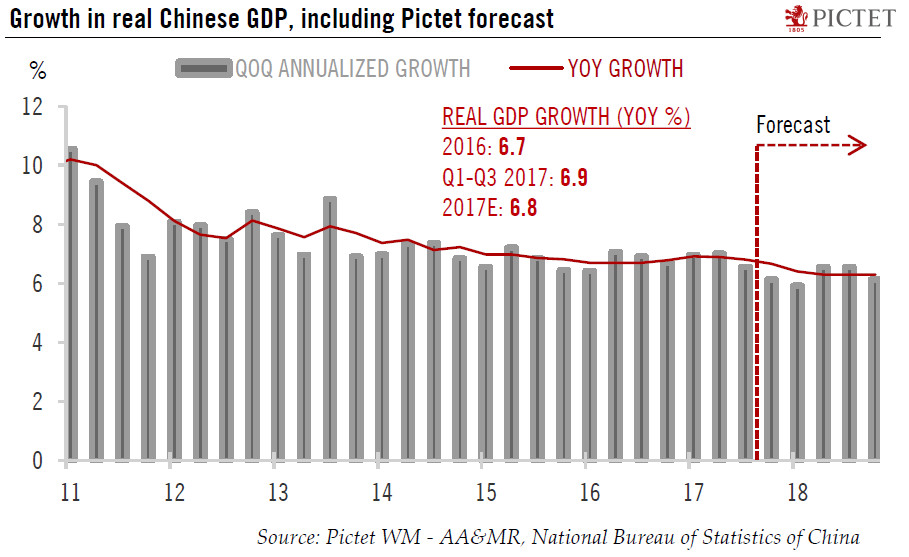Q3 growth figures were in line with our expectations and confirmed ongoing changes in the structure of the Chinese economy. Our forecast for Chinese GDP growth remains unchanged.Chinese GDP for Q3 2017 came in at Rmb21.2 trillion (USD3.2 trillion), growing by 6.8% y-o-y in real terms, slightly below the pace of expansion in the first half of the year (6.9%).Several points are worth highlighting.First, China’s economic transition is well underway. The tertiary sector, mainly services, continues to be the main driver of Chinese growth. The tertiary sector rose by 8% y-o-y in Q3, significantly higher than the primary and the secondary sectors.Second, Exports continue to support Chinese growth as global demand remains robust. But exports’ share of GDP has been constantly declining, indicating
Topics:
Dong Chen considers the following as important: China economic transition, China GDP growth, China PPI, China Q3 GDP, Chinese growth, Macroview
This could be interesting, too:
Cesar Perez Ruiz writes Weekly View – Big Splits
Cesar Perez Ruiz writes Weekly View – Central Bank Halloween
Cesar Perez Ruiz writes Weekly View – Widening bottlenecks
Cesar Perez Ruiz writes Weekly View – Debt ceiling deadline postponed
Q3 growth figures were in line with our expectations and confirmed ongoing changes in the structure of the Chinese economy. Our forecast for Chinese GDP growth remains unchanged.

Chinese GDP for Q3 2017 came in at Rmb21.2 trillion (USD3.2 trillion), growing by 6.8% y-o-y in real terms, slightly below the pace of expansion in the first half of the year (6.9%).
Several points are worth highlighting.
First, China’s economic transition is well underway. The tertiary sector, mainly services, continues to be the main driver of Chinese growth. The tertiary sector rose by 8% y-o-y in Q3, significantly higher than the primary and the secondary sectors.
Second, Exports continue to support Chinese growth as global demand remains robust. But exports’ share of GDP has been constantly declining, indicating the Chinese economy is becoming increasingly domestic driven. In mid-2006, exports as a share of China’s GDP peaked at nearly 40%, but in recent quarters Chinese exports’ share of GDP has consistently been below 20%.
Third, the growth in China’s nominal GDP remains elevated (11.2% y-o-y in Q3. The rebound in the producer price index (PPI) has been the main driver of the strong nominal GDP growth in 2017 and has benefited China’s industrial sector, especially firms in the upstream raw-material industries, by boosting profitability.
The improving profitability of the industrial sector has created favourable conditions for some highly leveraged companies to reduce their debts. In Q2 2017, we observed that the debt-to-GDP ratio for China’s non-financial corporate sector had started to decline. With PPI and nominal GDP remaining at elevated levels, we expect this positive development to continue in the near term.
